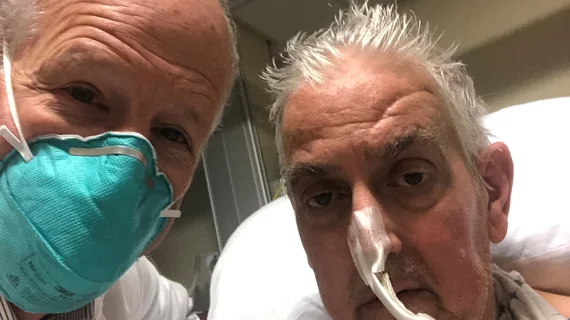New details on the pig heart transplant patient's death, from the doctors who treated him
The first human patient to receive a genetically modified pig heart likely died from heart failure, according to an updated analysis from the University of Maryland Medical Center (UMMC) in Baltimore.
The historic procedure took place back in January. The patient, 57-year-old David Bennett, died on March 8, two months after the transplant. UMMC shared a statement at the time, calling Bennett a “brave and noble patient who fought all the way to the end,” but no additional details about his death were shared with the public at the time.
Now, however, UMMC specialists have shared key details about the procedure in the New England Journal of Medicine.[1] Bartley P. Griffith, MD, the original surgeon who transplanted the pig heart, served as the study’s co-lead author.
Griffith et al. noted that Bennett appeared to have momentum after the procedure. He was quickly weaned off of extracorporeal membrane oxygenation (ECMO), for instance, even though he needed ECMO to stay alive before receiving the new heart. UMMC even sent out a hopeful update in late February, noting that he watched Super Bowl LVI between the Los Angeles Rams and Cincinnati Bengals and even sang along with “America the Beautiful.”
“We were incredibly encouraged by his progress,” Griffith said in a prepared statement. “His heart was strong, almost too strong for his frail body, but he had a strong will to live.”
The authors also wrote that the Bennett’s body did not seem to reject the genetically modified pig heart. Even during his autopsy, the specialists did not see any of the signs of rejection one might expect to uncover in such a unique situation.
“Instead, we saw a thickening and later stiffening of the heart muscle leading to diastolic heart failure, which means the heart muscle was not able to relax and fill the heart with blood as it is supposed to,” Griffith explained.
This heart failure seems to have been brought on my multiple factors, including the use of a drug that was specifically developed with antibodies against pig cells; using this medication, the team wrote, may have had a negative interaction with the pig heart.
Another potential issue, as Griffith previously mentioned during a recent webinar, is that evidence of DNA from a pig virus, porcine cytomegalovirus, was detected after the surgery was complete. The UMMC release emphasized that specialists protected against the risk of pig pathogens through multiple infection control measures.
“We consider this to be an important learning experience,” Muhammad M. Mohiuddin, MBBS, program director of UMMC’s cardiac xenotransplantation program, said in the same statement. “Knowing what we know now, we will alter some of our practices and techniques in the future.”
Related Cardiac Surgery Content:
Pig heart transplant patient dies 2 months after historic procedure
Pig heart transplant patient doing well weeks after procedure—he even watched the Super Bowl
Young patient recovering after world’s first combination heart transplant and thymus procedure
Reference:

